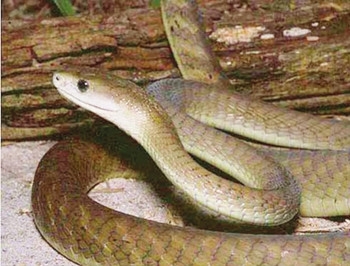
The cold climate conifer forests of the north displaced broadleaved woodlands. Plants and animals were gradually pushed south to find a warmer climate. Florida became a refuge from the cold. Down here is where the Ice Age north met the subtropical south. Today in a cool wooded part of the Sunshine State, you can still see some of these northern refugees.
北方生长在寒冷气候的针叶树林取代了大面积的森林。为了找到更温暖的气候,植物和动物都逐渐向南部转移。佛罗里达成为了逃避北方寒冷气候的避难所。这里成为了北方冰河时代气候与南方亚热带气候交界的地方。如今,在这个“阳光州”阴凉的树林里,你还是能看见这些来自北方的“难民”。
The valleys along the Apalachicola River are home to many species that were forced here in the Ice Age and now remain far away from their populations further north, like the copperhead snake and an astonishing variety of amphibians.
阿巴拉契科拉河沿岸的峡谷是很多物种的栖息地,他们在冰河时代被迫来到此处,他们距离他们北方的亲戚十分遥远,这些动物包括铜头蛇以及一大系列的两栖动物。
During the Ice Age, Florida was crucial to the survival of many such mild-weather species. They couldn't have withstood the cold of north, and without this refuge, they would simply have become extinct. Another leftover, but one that arrived from the opposite direction.
在冰河时代,佛罗里达对于许多温和气候动物的存活起到了至关重要的作用。如果没有佛罗里达,他们不能抵抗北方的严寒,他们可能已经灭亡。还剩下一种动物,但是这种动物是从相反的方向来的佛罗里达。
英文文本来自普特英语,译文属可可原创,仅供学习交流使用,未经许可不得转载.












